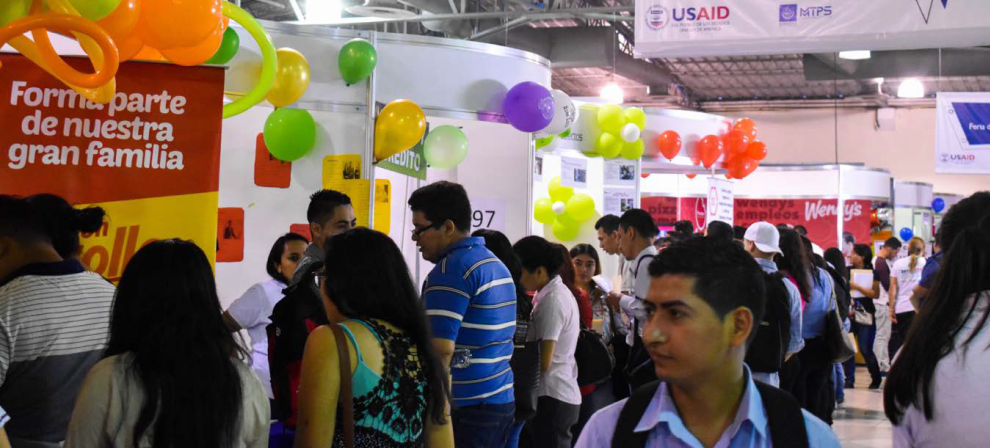DEVELOPMENTS
Getting Creative with Transportation for El Salvador’s Young Job-Seekers
This post is one of a series of posts on youth-employment-series.
Apr 1, 2019
An estimated 80 percent of El Salvador’s formal jobs are concentrated in greater San Salvador, according to the USAID Bridges to Employment labor market assessment. Yet close to two-thirds of the Salvadoran population lives outside of that metropolitan area.
Many young people outside San Salvador rely on public transportation to commute to work or get to job interviews. But public buses have irregular schedules or no service at hours when workers need transport, and limited routes to where youth live—all of which restricts their ability to get to where the jobs are. Most retail jobs require working late hours or weekend shifts when bus routes are most infrequent, posing safety risks especially for young women. With gangs active in 247 of El Salvador’s 262 municipalities, territoriality between competing gangs affects who can come in and out of which neighborhoods, exacerbating young people’s inability to work outside the areas where they live.

By organizing group transportation to San Salvador, training centers’ job placement managers help Salvadoran youth to attend their first job fairs and meet hiring managers. Photo: USAID Bridges.
With USAID support, local youth-serving organizations are taking on this challenge. For example, local job placement managers are helping young people plan the logistics of the job interview process. Retail jobs such as fast food or clothing sales often require an interview at a national chain’s headquarters in San Salvador, even if the franchise location is closer to the young person’s home.
Rosa, to take just one example, is a go-getting 20-something living in Santa Ana. After completing a Bridges to Employment course in customer service and life skills, she applied to work at her local Papa John’s. But first she had to travel 70 kilometers to San Salvador—alone—to interview at the pizza company’s headquarters. Since she had never been to San Salvador, she left home at 4:30 a.m. to ensure she’d be on time for her 8:00 a.m. appointment. Despite her planning, she got lost in the city and had to clean up after a baby vomited on her during her long bus ride. But Rosa was unfazed. Even though she was 15 minutes late, she drew on her natural confidence and her life skills training to ace the interview and secure her first job. Rosa is now one of the restaurant’s most valued employees.
To ensure candidates like Rosa get to their interviews on time, a job placement manager helps the young person (i) identify a safe bus route that does not go through gang turf; (ii) map the route including pick-up, transfer, and drop-off; (iii) estimate the duration of the trip, which can often exceed two hours; and (iv) trace how he or she will get to the interview address from the bus drop-off. Previously frustrated employers have seen interview attendance rates go up and punctuality improve.
A second approach involves co-designing transportation solutions with employers. Some employers, such as textiles and garments factories in remote areas, or urban hotel chains such as Marriott, provide vans to securely transport employees to and from work. Other employers, such as shoe manufacturer ADOC, do not provide transportation but try to ensure safe commutes for their employees. ADOC’s campus is situated amid the dangerous neighborhoods of the Soyapango municipality. A public bus stops right outside ADOC’s factory gate and drives the 900 meters to the centrally located Plaza Mundo shopping mall, where young employees get picked up by their families or transfer to a bus home. All young employees leave the evening shift in groups, and someone from ADOC oversees the group to ensure they get safely on the bus.
That said, some young people are still unable to accept ADOC job offers because the infrequent bus schedule does not allow them to make the return trip home after their shift. Bridges to Employment and its partners still have work to do.